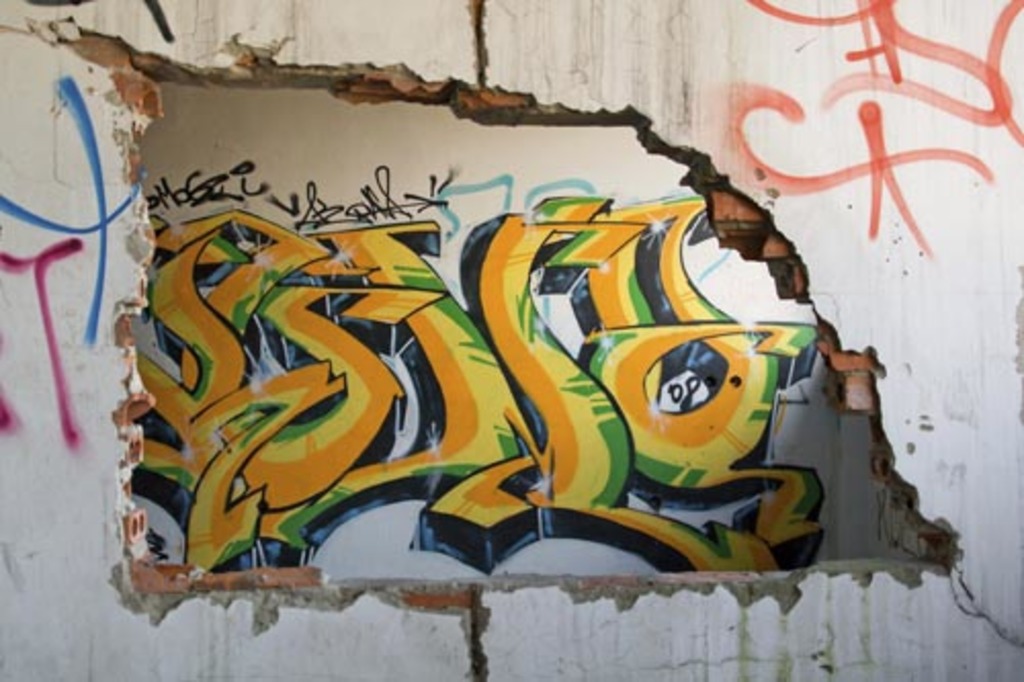

|
Chris Shaw
Editor |
6 top tips for the best way to remove graffiti
10 February 2017
Graffiti is a culture, yes? Graffiti is an art form, yes? Err, no, graffiti is a pain in the backside! And much like those annoying wads of chewing gum stuck fast to our pavements, graffiti appears everywhere – on buildings, bridges, walls, and any other space graffiti dweebs decide is the most appropriate for their ‘creations’.

In an article for the Telegraph in 2015, Anthony Peregrine wrote about a rail trip to Paris in an article in The Telegraph. It says: ‘As is the case in all great cities, the train enters Paris via the urban armpit. The approach to mainline stations is nondescript and ugly, because nobody wants to put anything pretty by a railway line. It is, though, rendered infinitely more so by looping, bulbous swathes of multicoloured graffiti. I despair easily, and despaired at the Gare d’Austerlitz, and again at the Gare de Lyon because there was graffiti everywhere. My trigger finger itched. How dare hooded wackos with aerosols inflict this on me, as well as on several million Parisians? “If this street stuff is art,” I muttered to the world in general, “then my burp is a concerto.”’
The right tools for graffiti removal
Luckily, with the right tools and techniques, you can remove graffiti easily and safely. But before you make a start have the following items at the ready.
- Painters’ rags (clean ones)
- Aerosol solvents
- Stiff wire brushes
- Rubber gloves
- A power washer
- Dust mask/respirator
- Safety goggles
When it comes to solvents and cleaners, there are many cleaning products in DIY stores that can help you clean graffiti from various surfaces. But beware, as these can be hazardous to your health. You should wear safety glasses to protect your eyes and a respirator rather than a dust mask, so as not to inhale the harmful fumes.
Using wire brushes together with a solvent can be an excellent way to remove graffiti from surfaces like smooth stones, decorative rocks, wooden fences, concrete and some rough metals. If the surface is smooth, start by cleaning the area with soap and water. If this doesn’t work try using a solvent. Graffiti on rough surfaces like cinder block can cause permanent damage. In this case, you’ll probably have to use a power washer with a biodegradable emulsifier.
Sometimes a wire brush together with solvents can be a great way to clean red brick surfaces, but very often there may still be traces of paint left behind. If this is the case, you need to power wash the walls using a biodegradable emulsifier. This method minimises the toll on the surface whilst completely removing the paint.
Top tips to get great graffiti cleaning results
Essential protection
Before you start, protect the space around you. Using masking tape, stick plastic sheets to those surfaces that are not meant to be cleaned. Place a tarpaulin on the floor below the area you’re about to clean, put on your rubber gloves and respirator or dust mask and get to work.
Work top down
Now start from the top of the area to be cleaned and work your way down to the bottom. At the same time try to catch any running or dripping fluids. To get rid of chalk graffiti, it’s best to pressure-wash, but in the case of spray paint, you’ll probably need some type of solvent, cleaner or abrasive. Products that work really well on brick surfaces are acetone, paint thinner, baking soda-based products and WD-40, so try these.
Trial and error
Sometimes testing different methods is the best approach. Start with the least invasive method like soap and water, then try a solvent applied with a cloth, and finally try using a high-pressure washer (1000 to 3500 PSI) – but use hot water only and a wide-angled fan nozzle rather than a single jet-spray, so as not to damage the surface.
A combination can be good
A pressure washer used in conjunction with a solvent can give the best results. You should first apply the solution to the surface, wait for a few seconds while it takes hold, then start using the pressure washer.
Apply a preventative coating
Once you’ve cleaned the wall, you might like to apply a graffiti barrier coating (CPU 647, or OKON). Once applied, it forms a tough protective barrier and prevents additional coatings of paint from adhering to the surface.
Note: There are two types of coatings: sacrificial and non-sacrificial. The sacrificial coating protects the surface it’s applied to, but washes away after just one or two cleanings, while the non-sacrificial coating lasts for up to a dozen cleanings or so before reapplication is required.
And if all else fails…?
If, after all that, you can’t get rid of that messy graffiti, you’re probably going to have to re-paint the entire surface. Just remember to apply a good number of coats so that you stop the image from bleeding through.
Contributed by Cleaning Industrial Solutions
- Five reasons modern scheduling software is essential for window cleaners
- Cleaning and the circular economy
- The low-down on latex gloves
- 3 weird office cleaning tips that actually work
- Halloween Cleaning Tips
- Cleaning your office before the Christmas period
- How to unblock a sink and other tips for regular kitchen cleaning
- Secrets of the dry cleaning industry
- What can ultrasonic cleaning offer the 3D printing industry?
- Growth of pest control register seen as positive step
- No related articles listed





















